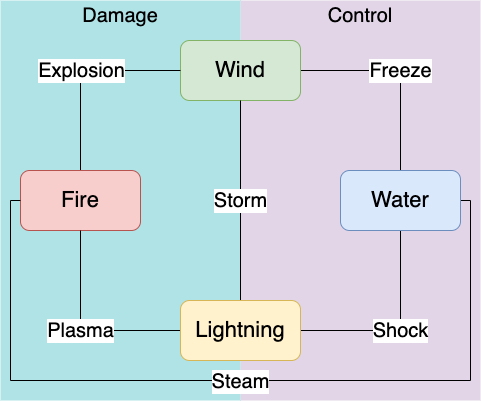Dev Blog Week 4
Introduction
Hola! Here’s week 4 update of Get Out of My Land! So far we have been setting up some basic system for our game prototype so that we have something to playtest and test out some of our ideas in Unity engine. This week, we are focusing on flashing out more basic mechanics and working on AI/ML and some UIUX stuff for the game. Based on the feedback to our game proposal, our team decided to focus more on the PvE aspect for now because it is harder to balance PvE and PvP at the same time. Catch up with what we are making below ![]()
Brewing…
We started merging all the work that we have done on our separate git branch into one for the prototype presentation. The systems are pretty much from last week’s progress so we shall not reiterate it again. If you’re interested in what we did do check that out!
On top of the merging of mechanics, here are some updates on the game design side. Primarily on our tower, enemy and card system and we attempted to link it to the Six Metrics of “Virtual Communication of Games.
Enemy System Update
Here, we define 4 different types of enemy. They are designed to resemble classes in a classic RPG game. Enemy in the game will each have their own special trait that will make the game more challenging. We link the resemblance of class with their trait. For example, tank enemy can taunt just like any other RPG game.
| Enemy Entity | Description |
| Warrior | Warrior has medium health, medium defence and medium speed. Warrior can charge forward for a short distance in an interval of 15 seconds |
| Tank | Tank has high health, high defence at the cost of slow speed. Tank can hold up their shield and taunt the turrets and make them prioritise it in an interval of 25 seconds. |
| Assassin | Assassin has low health, low defence and high speed. Assassin can go invisible and become un-targetable in an interval of 30 seconds. |
| Healer | Healer has medium health, low defence and medium speed. It can heal another enemy entity in an interval of 10 seconds. |
Deck System Update
Add a Card
After each wave of enemies, the player will be offered a group of three cards and will be able to pick a card from the group and add it to the player’s deck for the rest of the game. Of course, the player can also choose not to pick any card and continue to the next wave.
Draw Cards
Before the wave of enemies comes, all the cards in the hand will remain and the player will draw up to 5 cards randomly using Fisher-Yates algorithm into the hand. This algorithm ensures that every card in the deck has the same probability of getting drawn into the hand.
Use a Card
The card system does not have any action points unlike any other games with similar system. The player can choose which card to use at certain location before the wave of enemies comes. During the wave, the player can also cast spell cards at any point in time.
This mechanic enhances active gameplay to make tower defence more engaging because most of the old school tower defence game have a long passive gameplay where the player sits and wait for the wave to end.
The player can choose to keep some cards in their hand to the next wave by not using the card.
Strategies Implied
Like many other card games, even though the drawing of cards into the player’s hand is randomised, the player can control this randomness if the player build the deck correctly by having more or less of a certain type of card.
Tower System Update
Elemental Reactions
The tower has elements, and they can create different combinations with one another when attacking the enemy. The elements will form a cyclic, turn taking relationship between one another. This means that when the enemy entity is being drenched by a water tower, then strike by a lightning tower, the enemy will be shocked in the resemblance of nature and physics. Shortly after each successful chain of element attack, the enemy will gain a short period of resistance towards those elements and be weaker to other element combinations.

Elements and their reactions
Types of Tower
Here, we define 4 different types of tower. They are designed to resemble elements in a classic RPG game. Towers in the game will each have their own special trait that will allow various combination as we attempt to allow the player be as free as possible when designing their own strategy. We link the elements with their trait. For example, fire tower can cause enemy entities to burn and receive damage over time effect.
| Tower Entity | Description | Element Reaction |
| Lightning tower | Lightning tower zaps enemy entities. This tower specialise in extreme damage single target. | Plasma/Shock/Storm (1 Damage, 1 Control, 1 Hybrid) |
| Fire tower | Fire tower shoots fireball at enemy entities. This tower specialise in high damage over time single target. | Explosion/Plasma/Steam (2 Damage, 1 Hybrid) |
| Water tower | Water tower cast corrosive rain in an area (AoE). This tower specialise in low damage over time over large area. | Freeze/Shock/Steam (2 Controls, 1 Hybrid) |
| Wind tower | Wind tower shoots out a tornado in a straight line (AoE). This tower specialise in medium area of effect damage in a straight path. | Freeze/Explosion/Storm (1 Damage, 1 Control, 1 Hybrid) |
UIUX Design Update
On top of that, we have decided each logo for our game and team branding aspects. As well as confirming the layout and design of the front and back cover of the card UI. We have also came up with wireframes, mockups and the general user flow of the game, to give our audience a snippet of the game preview in the first stage of prototype progress. At the same time, we have re-rendered 4 types of tower models namely Water, Wind, Fire and Lightning towers. Will be researching for the enemies' 3D low poly models soon.

Our game logo

Our team logo

Our card UI for front and back cover - tower and land card type

4 types of 3D towers - water, fire, wind and lightning
Get Get Out of My Land!
Get Out of My Land!
☁️ Be 🏔️ the 👑 Next King
| Status | In development |
| Author | goml |
| Genre | Strategy |
| Tags | 3D, Fantasy, Roguelike, Singleplayer, Tower Defense |
More posts
- Dev Blog Week 12Nov 06, 2022
- Dev Blog Week 11Oct 28, 2022
- Dev Blog Week 10Oct 23, 2022
- Dev Blog Week 9Oct 17, 2022
- Dev Blog Week 8Oct 13, 2022
- Dev Blog Week 7Sep 26, 2022
- Dev Blog Week 6Sep 17, 2022
- Dev Blog Week 5Sep 09, 2022
- Dev Blog Week 3Sep 01, 2022

Leave a comment
Log in with itch.io to leave a comment.